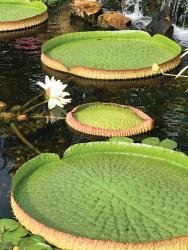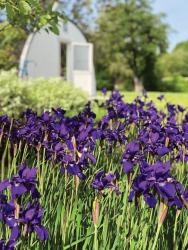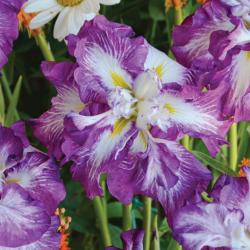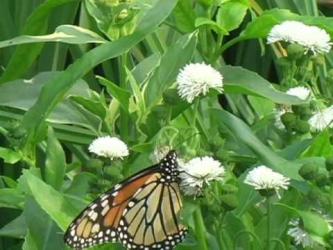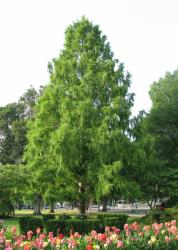As summer draws to a close, be sure to make the best of your pond-side oasis. Here are some local landscapers' favorite water-lovers that can live in or around your pond.
Victoria Amazonica and Victoria Cruziana
Giant Water Lily
Information provided by Josh Bauer, Bauer Falls.
Water temperature
75 degrees.
Location + Light
Thrive in ponds exposed to afternoon sun.
Fertilizer
Mix in 10-10-10 fertilizer in with the dirt at the bottom of a large lily pot.
Bloom time
Bloom at night with white flowers that last until early morning. The white flowers then take a pink hue and sink under the water’s surface.
The Victoria Amazonica, commonly called a Giant Water Lily, has vertical rims that are 2 to 3 inches high. The underside of the leaf is purple. The Victoria Cruziana has vertical rims that are 3 to 4 inches high, and the underside of the leaves are green.
Both varieties produce leaves 2 to 4 feet in diameter in our pond. The rim and underside of the leaves on both varieties have large thorns. We have Koi, and they have never been scratched by the thorns. It has been our experience that if planted too early, and if there is a cold snap, they do not recover. Although they are grown from seeds, we do not have the facilities to grow them ourselves, so we purchase plants that have been started in nurseries. They can be purchased at the better plant stores or online. Once home, mix 1 1⁄2 cups of 10-10-10 fertilizer with the dirt in the bottom of a large lily pot and form a cone. Next, spread the roots out around the cone, cover with dirt and top with a 1⁄2 inch of pea gravel. Be sure to cover the pot with a couple pieces of slate to stop the Koi from digging in it. Weekly, cut off the older leaves and spent flowers at the same time you clean up our other lily varieties. Cutting them back to three leaves will yield five leaves within one week. This is all the leaf coverage that our pond can handle. I add 5 fertilizer tablets every two weeks. Like all tropical water lilies, their bloom time is in the hottest part of the summer. They are prettiest from mid-July to early September. We grow them because they are beautiful, unique and a source of pride when they do well. Night bloomers, in general, are our favorites because we can enjoy the blooms later in the evening and through midmorning when we are most likely to sit outside.


